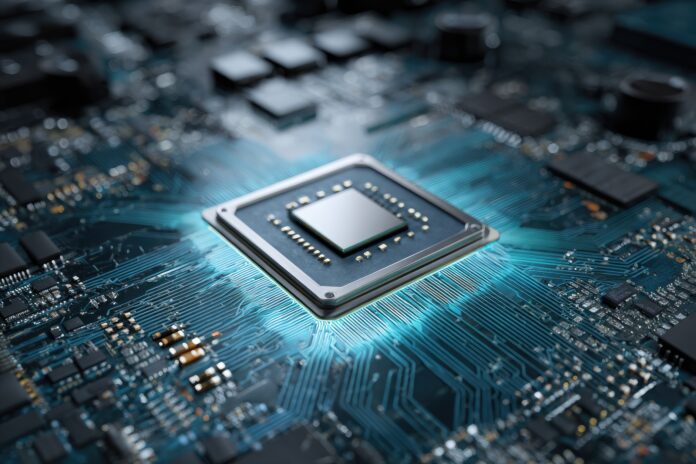How AMD’s Latest Move Will Reshape the AI Chip Landscape
The AI hardware and software race just got more interesting. AMD has announced the acquisition of Brium, a team renowned for its compiler and AI software expertise. This move underscores AMD’s determination to strengthen its open AI software ecosystem and directly challenge Nvidia’s dominance in the field[2][3][4]. By focusing on software innovation, AMD aims to empower developers and enterprises with more flexible, high-performance AI solutions.
Why This Acquisition Matters in the AI Market
AMD’s purchase of Brium is not just another corporate deal. Because Nvidia currently leads the AI hardware and software market, this acquisition signals AMD’s intent to level the playing field. Most importantly, Brium’s team brings world-class experience in compilers, which are essential for optimizing AI workloads across different hardware architectures[2][4]. This will help AMD’s chips perform better in real-world AI applications.
Besides that, AMD’s open approach to software development could attract more developers to its ecosystem. Therefore, the integration of Brium’s expertise will likely accelerate the adoption of AMD hardware in AI research and enterprise environments.
What Brium Brings to AMD
Brium specializes in compiler technology and AI software optimization. Compilers translate high-level code into efficient machine instructions, a process critical for AI model performance. With Brium on board, AMD expects to improve the efficiency and speed of AI workloads running on its processors[2][4].
Furthermore, Brium’s team has a history of collaboration with open source communities. This aligns perfectly with AMD’s strategy to build a robust, open AI software ecosystem. Through community-driven innovation, AMD hopes to foster faster development cycles and broader industry adoption.
Looking Beyond Hardware: The Role of Software in AI Success
While hardware advancements receive most of the spotlight, AI software plays an equally important role. Efficient software stacks can dramatically boost the performance of AI chips. Therefore, AMD’s investment in Brium shows its commitment to delivering complete solutions—not just powerful silicon.
Integrating high-quality compiler and AI software tools will help developers unlock the full potential of AMD’s hardware. This is crucial as enterprises increasingly demand turnkey AI platforms that combine reliability, performance, and ease of use.
AMD’s Broader AI Strategy
Beyond the Brium acquisition, AMD has made several strategic moves to position itself as a leader in AI. For example, last year, the company acquired ZT Systems, a major designer and manufacturer of AI and cloud data center equipment[5]. While ZT Systems focuses on infrastructure, Brium brings deep software expertise.
AMD’s leadership recognizes that hardware alone is not enough. By investing in both AI hardware and software, AMD aims to offer comprehensive, scalable solutions for cloud, enterprise, and research customers.
How This Affects Developers and Enterprises
For developers, AMD’s strengthened open AI software ecosystem means better tools, more support, and enhanced performance. Because Brium’s technology will be available to the broader community, developers can expect faster iteration and easier integration with AMD hardware[2][4].
Enterprises will benefit from accelerated AI model deployment and improved efficiency. With AMD’s expanding portfolio, organizations can leverage robust, flexible solutions tailored to their unique AI workflows.
The Competitive Landscape: Can AMD Really Challenge Nvidia?
Nvidia has long dominated the AI hardware and software space. However, AMD’s aggressive investments signal a shift. By acquiring Brium and making other strategic moves, AMD is building the foundation to compete head-to-head with Nvidia.
Most importantly, AMD’s open software strategy could attract a diverse developer community. This grassroots innovation may help AMD close the gap with Nvidia in the long run.
Future Outlook for AI Hardware and Software
The race for AI supremacy is far from over. AMD’s acquisition of Brium marks a significant step toward a more balanced, dynamic AI market. Because both hardware and software matter, companies that invest in both will likely lead the next wave of innovation.
Looking ahead, we can expect even more competition and rapid technological advances. AMD’s commitment to open, community-driven AI solutions will shape the future of the industry and empower developers worldwide.
Summary
AMD’s acquisition of Brium is a bold move to strengthen its open AI software ecosystem and challenge Nvidia’s dominance in AI hardware. By integrating world-class compiler and AI software expertise, AMD aims to deliver better performance, developer support, and enterprise solutions. Therefore, the AI market is set for an exciting, competitive future, with AMD positioned as a formidable challenger to Nvidia’s throne[2][3][4].
References
- Official AMD Blog on the Brium Acquisition[1]
- MLQ.ai: AMD Acquires Brium[2]
- StartupNews.fyi: AMD vs Nvidia in AI[3]
- TechPowerUp: AMD Strengthens Open AI Software Ecosystem[4]
- Tom’s Hardware: AMD’s $4.9B Acquisition of ZT Systems[5]



